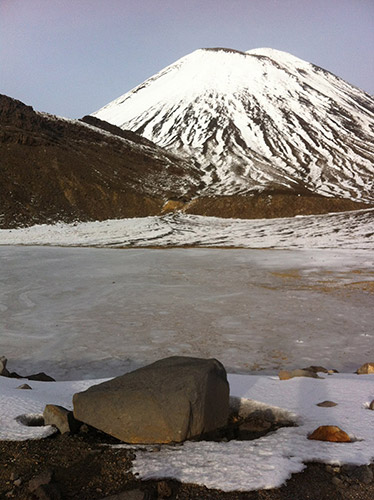How much you can see, understand and experience in a short time is an issue confronting us in contemporary life as we face the complexities of culture with a shortage of time. When you travel you are suddenly faced with the possibilities that unimagined places offer – learning about them and getting to know people.
I stayed in New Zealand for two weeks. I had the great opportunity to visit the comprehensive exhibition of South American art Space to Dream: recent Art from South America with Zara Stanhope, who showed me through the exhibition and the collection shows of Auckland Art Gallery. The collection shows allowed me to understand some of the fundamental issues that underlie New Zealand culture. The portraits of Māori chiefs and the challenging and somehow problematic representation of their values and beliefs in a western tradition, such as painting, was a wonderful introduction to the challenges of an intercultural society that combines different ways of understanding the world. Probably this topic is by far the most interesting of all the ideas that I experienced during my visit. Not only because we can see those ideas weaving through our daily life but also because these processes are common and recurrent in the actual world. Success in understanding and engaging in that discussion is vital for a truly shared coexistence.
The Space to Dream exhibition offered a good opportunity to rethink the similarities and differences that inform what we know as ‘South American art’. The complexities of that notion can certainly be experienced in the exhibition. I am also sure that for the public who visited the show, the diversity of the works and their content can only be seen as challenging. Visitors probably were faced with artworks that had a strong contextual content which includes portraying political and cultural unrest. I obviously recognise myself as an artist who works from that perspective and therefore share with the curators and the artists in the exhibition a strong bond that could even be thought of as an ‘identity issue’.
I have to acknowledge the very cogent curatorial discourse from Zara Stanhope and Beatriz Bustos. They did put together a representative show of art from South America which surely adds a great deal to the discussion of art in the world scene. How that relates to New Zealand reality or to the way artists in Auckland conceive art is a good open question. As a visitor to the exhibition, one finds a rigorous effort which acknowledges that exhibitions are events that have to be read and that curatorial work is in a way a translation exercise.
But my visit also involved a talk at Auckland Art Gallery, titled Public Space and Social Construction, during which I was able to express some of my deepest concerns with my art practice. The preparation of the talk was full of uncertainties on how to get across particular topics without simplifying them too much, but at the same time being able to underwrite their most substantial characteristics. Again, I was aware of the need to explain, to talk not only about art but about life and reality, and about how certain particularities can be relevant to audiences. I have to say that I felt the audience was interested enough in the historical framework of my practice. That encouraged me to share with them facts about Colombia which nurtured the understanding of my work.
My time in New Zealand was made possible by a joint effort. Auckland Art Gallery worked closely with the Whitecliffe College of Arts and Design. I was invited as the International Guest in the winter Seminar for the MFA programme. This was an enriching activity that involved assessments, a talk and most importantly the possibility to get to know peers and students. I found that the energy, seriousness and generosity of teaching was shared by all alike, to a degree that I could feel a common ground. This was a very fruitful connection which surely benefited all the activities at Whitecliffe. I will always value and be thankful for being able to work alongside Noel Ivanoff, to whom I am especially grateful, and also with Tania Eccleston, Anthony Byrt and everybody else at the College. Noel is not only a great professional but also a wonderful cook. Thanks for the delicious lamb and all the time shared with me.
After finishing the academic activities I was ready to visit places in the North Island. This was a wonderful experience mostly because Bronwyn McKenzie, a student of the Master programme, offered to drive me to Rotorua. I had a great time with her and her family in rural New Zealand. Riding Bronwyn’s husband's bicycle early in the morning and going to the hot baths with her kids was really exciting.
I also did some conventional tourism. The best of it was the Tongariro Crossing, which I can recommend highly to anyone who likes mountains and physical effort.
